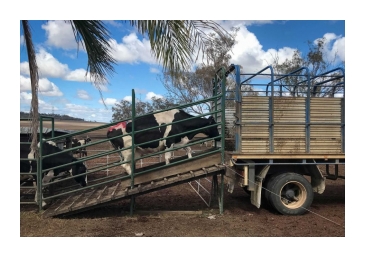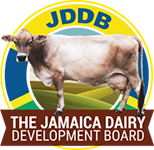Here are 6 Quick tips on how to care for your cow during transportation.

- Vehicle Specifications
- Vehicle must be of an appropriate size and design to facilitate the body size of the cow
- In good repair to ensure cattle arrive at the destination with minimum injuries and in shortest possible time.
- Stock crates should be well designed to minimise bruising and other issues. (No protrusions or sharp edges should be present)
- Vehicle should provide adequate ventilation
- Vehicle should provide non-slip flooring with proper drainage to reduce the risk of cow falling and slipping. Grids made from cross slating wood or metal are most suitable. Please note sawdust and grass are not suitable for flooring.
- Preloading Considerations
- Cows should be fed and watered before transporting
- Horned and Hornless animals should not be mixed in the transporting vehicle as this may cause bruising and injury.
- Transport Operations
- Time of day – high environmental temperature will increase the risk of heat stress and mortality during transportation
- Duration of journey – cows should not travel for more than 36 hours and should be offloaded after 24 hours for feed and water if the journey is to take longer than that.
- Driving – Vehicles should be driven smoothly, without jerks or sudden stops. Corners should be taken slowly and gently.
- Arrival at the Destination
- Properties should have adequate facilities to unload the cows when they arrive.
- A secure small paddock (or holding area) to confine the cows for the first 7 days of the animals being on location. This will allow animals to settle and acclimatize to the new location. Area should have adequate shading.
- Feed and Water Requirements
- The small paddock MUST have a continuous supply of clean safe water that is accessible to the animal.
- Adequate feed MUST be provided to the animals while in the holding area. Feed supplementation may be necessary if forage is not of high quality especially during the drier times of the year to maintain desired weight, condition and support growth.
- This is an ideal time to introduce animals to feeds used on your property, so cattle rumen can adjust gradually to the feeds available at your location.
- Some general water requirements for cows are:
- Dry Cows: 70 Litres/day
- Lactating Cows: 90 Litres/day
- Calves: 55 Litres/Day
- Some general water requirements for cows are:
- Assessment of the Health of the Cow
- While animals are in the small paddock use the opportunity to assess them. Some key things to observe includes:
- any injuries that might have occurred during transport
- lameness
- While animals are in the small paddock use the opportunity to assess them. Some key things to observe includes:


